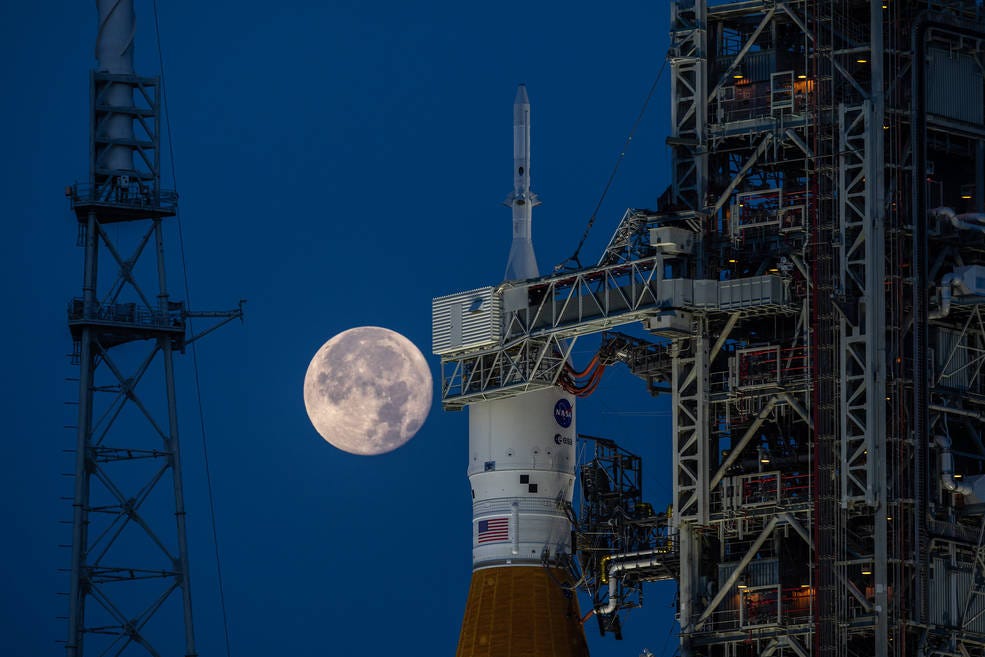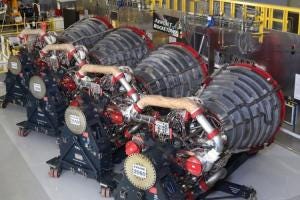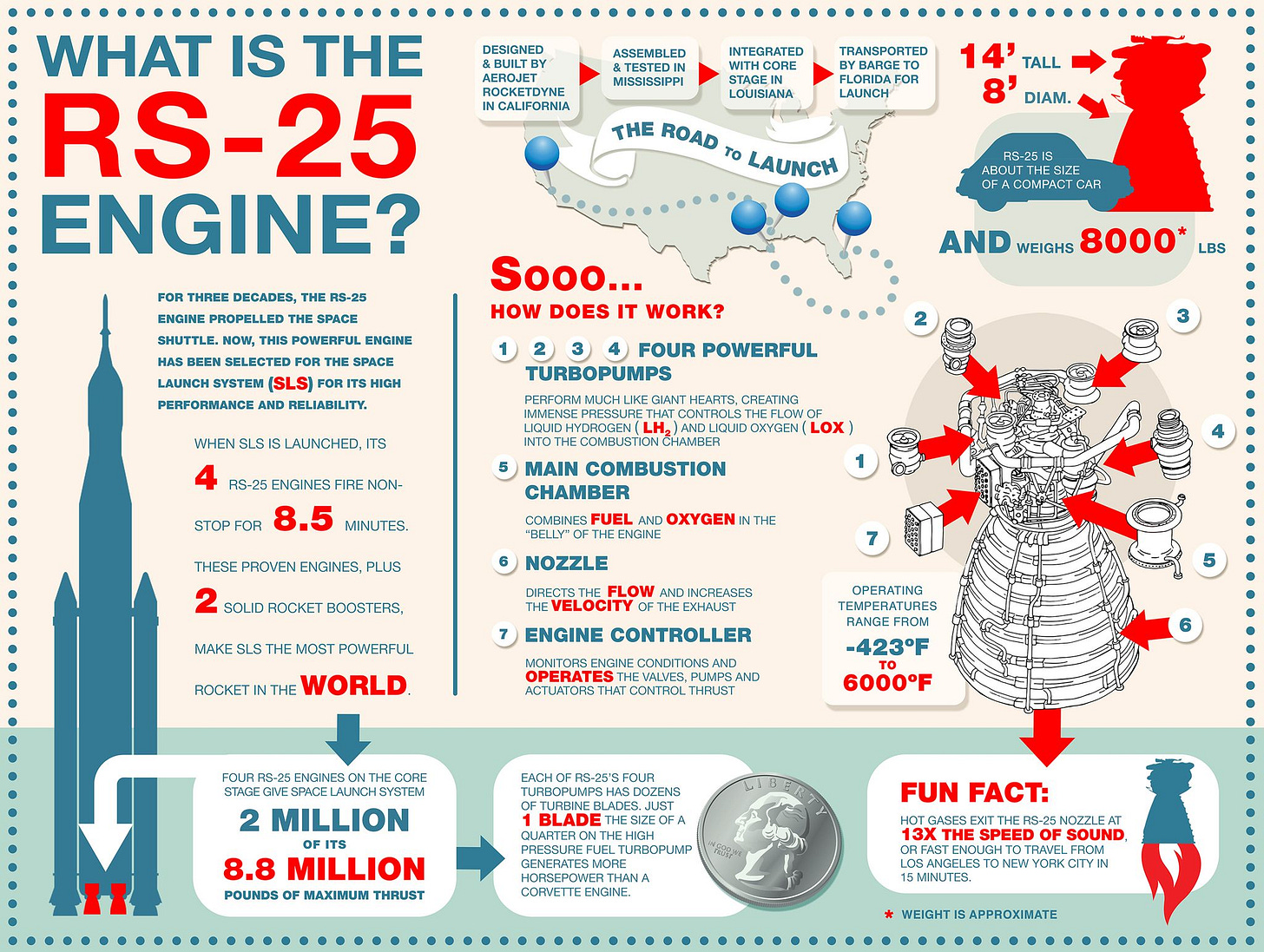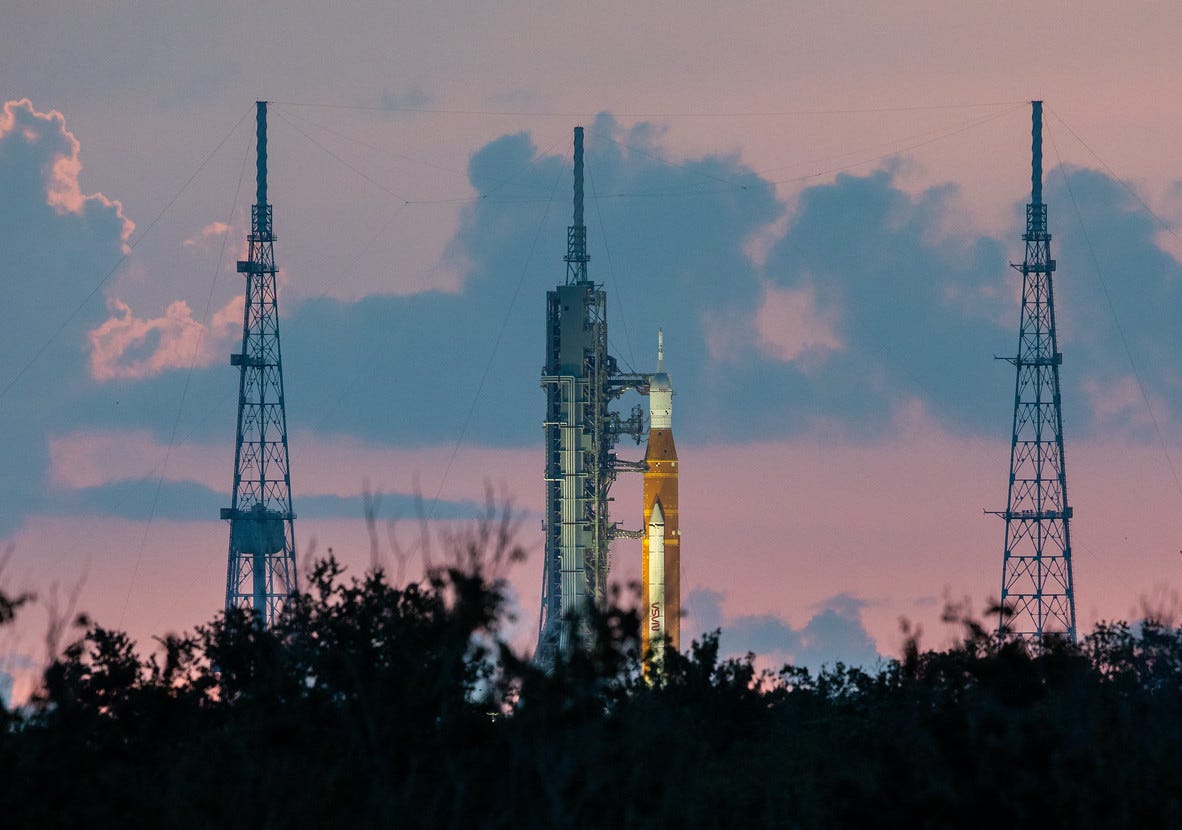
Thanks for finding Full Throttle. Please share and subscribe here. Full Throttle posts twice a week. It's free. Follow me on Twitter, Instagram, and Linkedin.
NASA says it will try again Saturday to go to the moon, believing a bad sensor may have led to the cancellation of Monday’s planned launch.
The countdown clock had been stopped Monday morning, held at T-minus 40 minutes. NASA’s “mega-moon rocket” was sitting on Pad 39B ready for its first launch ever. But there was a problem engineers were frantically trying to fix. One of the four main engines was not acting as expected. It was, as the Launch Director said last night, “out of family,” not acting like the others.

An RS-25 engine. Four of the former space shuttle main engines are used on the core stage of the SLS rocket for the Artemis missions. (Credit: Aerojet Rocketdyne)
We didn’t hear the conversations in the “firing-room” at the Kennedy Space Center. Soon, though, the announcement was made that the Launch Director, “called a scrub for the day.”
If you were one of the millions thought to be watching and listening you heard about the, “hydrogen bleed issue,” with engine #3. What does that really mean? What were the rocket engineers trying to accomplish by “bleeding” hydrogen through the engines?

The four engines now installed on the Artemis 1 SLS rocket at the Kennedy Space Station. (Credit: Aerojet Rocketdyne)
Liquid-fueled rockets like the Artemis 1 SLS (Space Launch System) are extremely complicated. They involve very cold fuel and very hot combustion and exhaust. This rocket uses supercooled hydrogen as fuel. It is mixed with oxygen, pressurized and then ignited to power the rocket off the pad. The rocket needs so much fuel and oxidizer that the hydrogen and oxygen are cooled until they turn from gas into a liquid.
Igniting these engines is a tricky process. Several steps have to be performed in specific order at specific times before lighting the fuel. Temperatures are critical. The engineers don’t want to pump that supercooled fuel through pipes and into an engine that is the temperature of a hot Florida morning. They want to “condition” the engine before they start pushing the pressurized fuel into it.

(Credit: Aerojet Rocketdyne)
Some of that really cold hydrogen is used to do some of that conditioning, or what you and I would call cooling. The engineers start pushing the hydrogen through the engine to chill it, and then “bleed off” that hydrogen after it has done its job into a vent tube off of the rocket.

(Credit: NASA)
The plan was to chill the engines to -420 Fahrenheit. Engines 1, 2, and 4 chilled to about -410F. But engine 3 showed only -380F. It wasn't getting cold enough. Puzzling for the engineers is that other sensors, on the ground side, testing the hydrogen after it had been bled off, suggest engine #3 actually was cold. The engineers now wonder whether the temperature sensor in engine #3 is malfunctioning.
More study and meetings are ahead in the coming hours. The man running the SLS rocket program, John Honeycutt (who seems wary of the sensor), wants to “go fly using the data we have.” That means if the hydrogen is bleeding off with pressure and is still really cold, he thinks launch is a go because the engines would be cold.
NASA's John Honeycutt explains his rationale of why a sensor may be malfunctioning and an "out of family" engine may be ready to fly. (Credit: NASA)
The NASA team knows these engines well. The RS-25 engines were used for space shuttle flights. All four of the engines had multiple flights before they were refurbished for use on this rocket. Engine #3 on Artemis 1 is serial number 2058. It flew six times to the International Space Station as part of a shuttle.

(Credit: Aerojet Rocketdyne)
A side note. The supercooled liquids are also used after ignition. If you look around the nozzle of an engine you will see pipes encircling the nozzle. Some of that supercooled liquid is pumped through those pipes before being sent into the engine. That circulation cools the nozzle and keeps it from melting during flight.
Launch is now set for Saturday with a two hour window open at 2:17 pm.
(Coverpage image credit: NASA)




